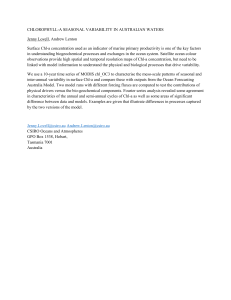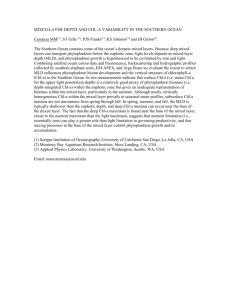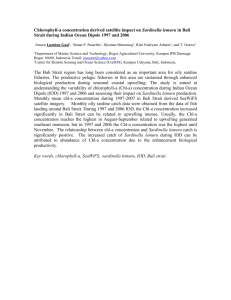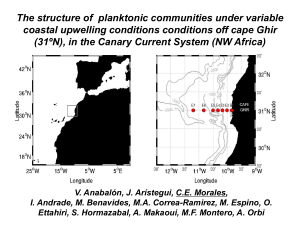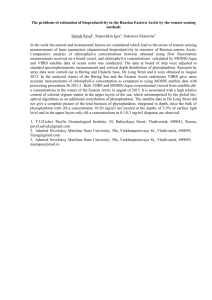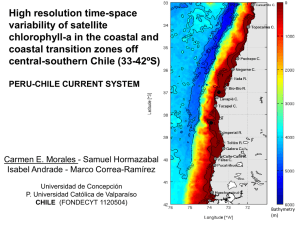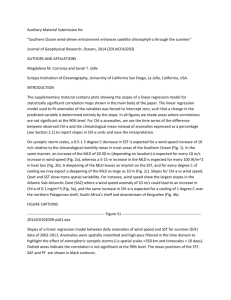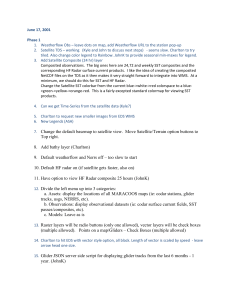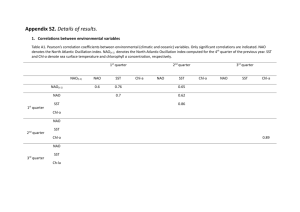Merging glider and ocean color data to accurately estimate
advertisement
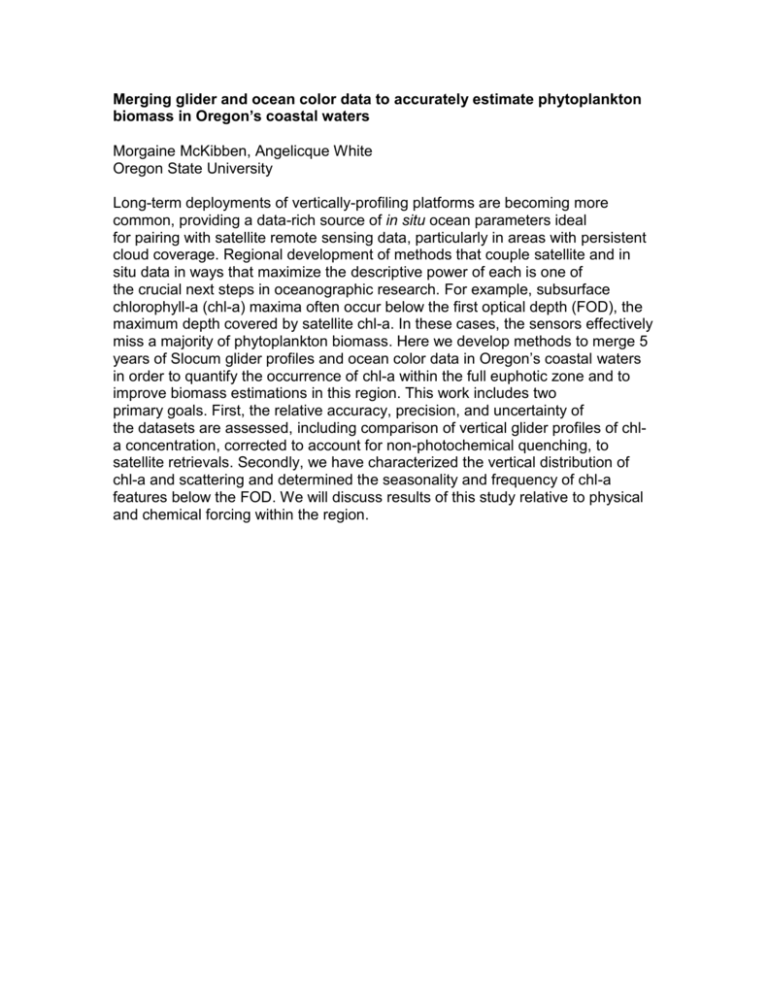
Merging glider and ocean color data to accurately estimate phytoplankton biomass in Oregon’s coastal waters Morgaine McKibben, Angelicque White Oregon State University Long-term deployments of vertically-profiling platforms are becoming more common, providing a data-rich source of in situ ocean parameters ideal for pairing with satellite remote sensing data, particularly in areas with persistent cloud coverage. Regional development of methods that couple satellite and in situ data in ways that maximize the descriptive power of each is one of the crucial next steps in oceanographic research. For example, subsurface chlorophyll-a (chl-a) maxima often occur below the first optical depth (FOD), the maximum depth covered by satellite chl-a. In these cases, the sensors effectively miss a majority of phytoplankton biomass. Here we develop methods to merge 5 years of Slocum glider profiles and ocean color data in Oregon’s coastal waters in order to quantify the occurrence of chl-a within the full euphotic zone and to improve biomass estimations in this region. This work includes two primary goals. First, the relative accuracy, precision, and uncertainty of the datasets are assessed, including comparison of vertical glider profiles of chla concentration, corrected to account for non-photochemical quenching, to satellite retrievals. Secondly, we have characterized the vertical distribution of chl-a and scattering and determined the seasonality and frequency of chl-a features below the FOD. We will discuss results of this study relative to physical and chemical forcing within the region.
